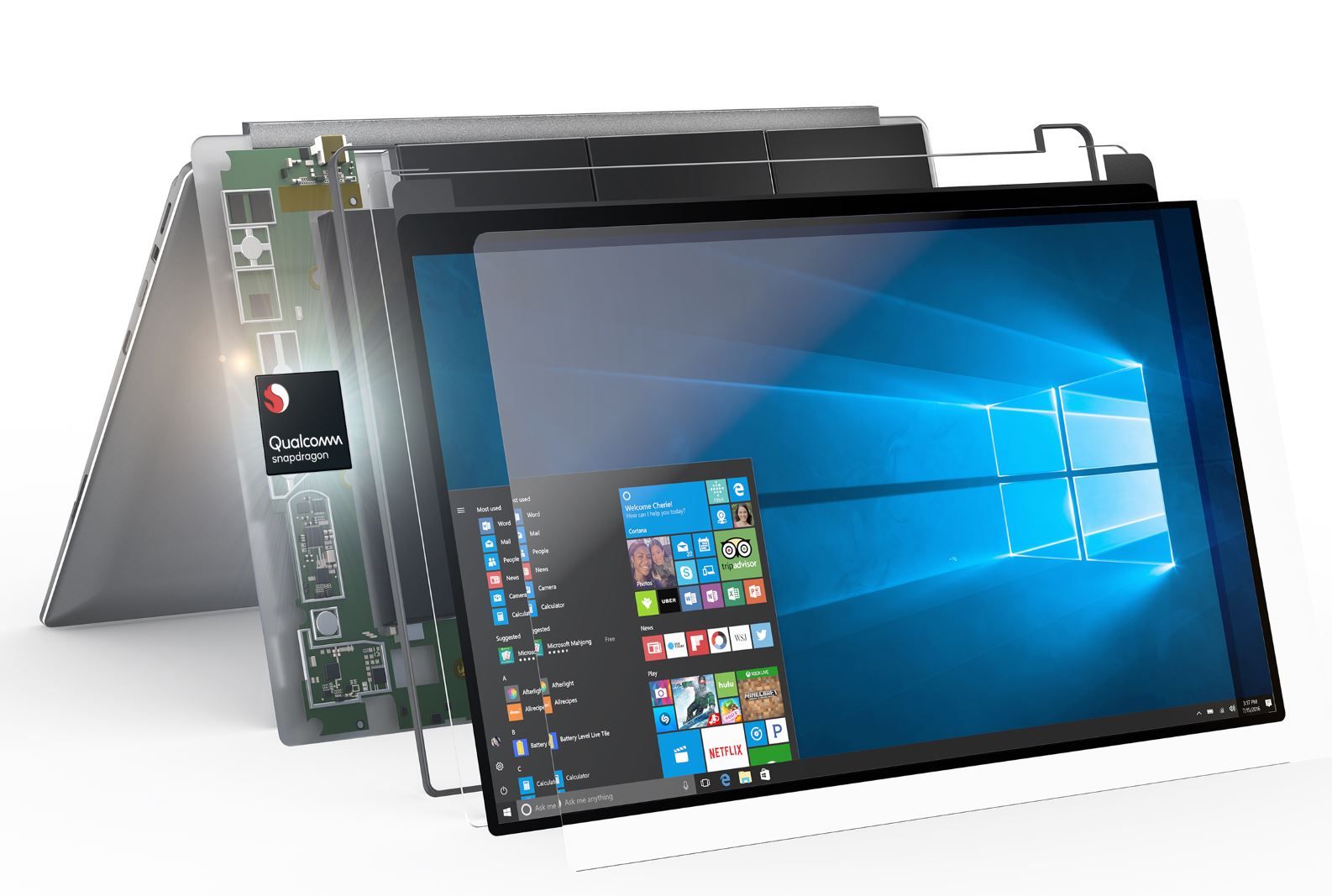Always-connected Windows 10 S PCs powered by Qualcomm Snapdragon are near to release and Qualcomm has announced that John Lewis and PC World will be among the retailers to stock them in the UK.
Essentially these devices will be Windows 10 PCs that have a SIM card slot (or eSIM) and will have a mobile contract like your phone. Consequently, they’ll always be online on 4G networks, just like your phone.
The already-announcedare the Lenovo Miix 630, HP’s Envy X2 and the Asus NovaGo, but expect one or two more at next week’s Mobile World Congress (MWC).
They’re based on the Snapdragon 835 System-on-Chip (SoC) with Adreno 540 graphics and the X16 LTE modem.
Note that they run Windows 10 S rather than the standard version of Windows 10 Home or Pro and are designed to run Windows Store apps – check out our guide to Windows 10 S for a more in-depth explanation. Traditional desktop Win32 apps will run under emulation.
Designed for mobile working rather than entertainment, they’ll also have cracking battery life, too; despite being always-connected, they’ll still be able to last through a working day.
And that could end up being very conservative with Asus even saying that the Nova Go “exceeds 22 hours” and HP saying “up to 22 hours”.
As for the retailers, Qualcomm has announced that John Lewis, Microsoft Stores, PC World, BT Shop and Asus stores will stock Snapdragon-powered PCs in the UK, while in the US Amazon and Microsoft Stores are the retailers of choice. In Australia, Microsoft Stores will be retailing them.
In the UK, Qualcomm previously announced that EE would be its network partner with Sprint and Verizon in the US, but it has now signed up T-Mobile and AT&T in the US as well. Elsewhere in Europe, Deutsche Telekom, Telefónica, Swisscom, TIM ,Transatel and Cubic are also backing Snapdragon on Windows.
Big-name retailers are also set to join the party, but details haven’t yet been officially announced by Qualcomm. Some of the announced networks will also feature the devices in their bricks and mortar stores.
What isn’t clear yet is how these devices will be marketed to consumers - how will these devices be presented in store?
If it’s anything like the last attempt at Windows-on-ARM devices, Windows RT, it will be difficult to explain them to customers, especially with Windows 10 S.
Despite Microsoft saying it would have effective point-of-sale material to accompany RT, it completely failed to get the message across.
One way Qualcomm is keen to keep things simple is to sell the devices with contracts. Qualcomm envisages that users will be able to turn on the device, select the network they use for their phone anyway and simply add it to their existing tariff via eSIM.
Though as Qualcomm’s director of business development Ben Timmons admitted to us, “that functionality is a bit of a challenge” and certainly in the initial devices customers will need to insert a SIM.
Liked this? Check out our guide to the best tablets and 2-in-1s

